Tour South East Asia’s New Year Celebrations with AIHM’s Students
-1.png)
As April unfolds in South East Asia, temperatures rise and water splashing celebrations take over the streets. For much of South East Asia, mid-April marks the traditional New Year’s Festival.
The transition to a new year is time for renewal. Water cleanses and washes away negativity—while also providing a fun way to cool down and celebrate amidst the heat.
In Thailand, the New Year Festival is called Songkran. Buddhist rituals intersperse with spirited celebrations. For AIHM’s Thai students as well as our many international students, the Songkran Festival is packed with excitement and moments of deeper meaning. Across South East Asia, similar New Year celebrations take place. Are you ready to tour South East Asia to see what the celebrations share in common from country to country and what they do differently? Three AIHM students—one each from Cambodia, Myanmar and Thailand—share their New Year’s traditions below.
Read on to discover the many similarities between these New Year festivals as well as the special traditions unique to each students’ home!
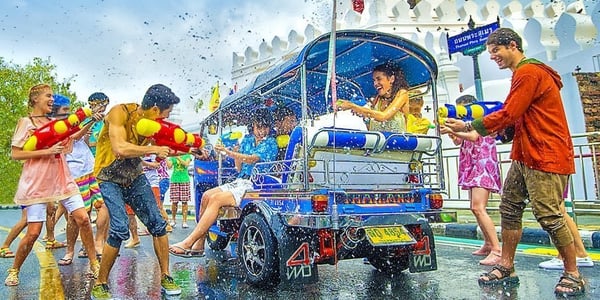 Photo credit: https://www.takemetour.com/article/songkran-thai-new-year-water-festival
Photo credit: https://www.takemetour.com/article/songkran-thai-new-year-water-festival
Cambodian New Year
Melissa So, AIHM BBA Student from Phnom Penh
In Cambodia, the Songkran holiday is also called Jol Chnam Thmey, meaning “entering a new year”. Cambodia’s largest event, the Khmer New Year lasts three days and begins on either the 13th or 14th of April. During this period, numerous traditions and ceremonies take place:
Day 1: Moha Songkran
The first day, Moha Songkran, is dedicated to the inauguration of the new gods for the approaching year. Cambodians will clean and decorate their house, while also preparing food and drinks to welcome the gods for the new year.
 Photo credit: https://www.cambodiabeginsat40.com/2023/04/traditional-khmer-new-year-celebrations/
Photo credit: https://www.cambodiabeginsat40.com/2023/04/traditional-khmer-new-year-celebrations/
Day 2: Veareak Vanabat
The second day, Vearak Vanabat, is focused on offering gifts to your parents, grandparents and elders as a sign of respect. In addition to honouring the elderly, we also offer charity by donating food, money or clothes to the underprivileged. In the evening, Cambodians will gather at Buddhist temples to perform the ceremony of building sand mountains believed to bring longevity and prosperity.
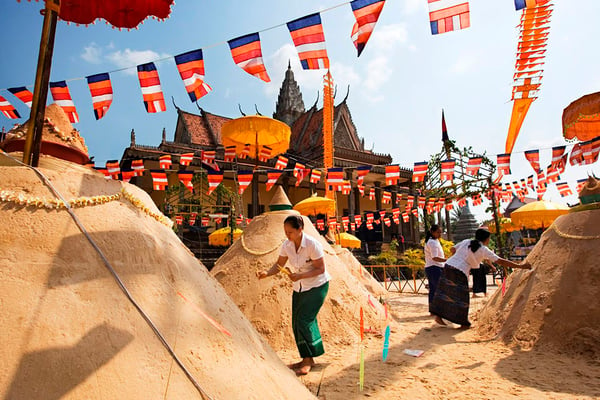
Photo credit: https://www.boreiangkor.com/5-activities-to-do-during-khmer-new-year-in-siem-reap/
Day 3: Veareak Loeng Sak
The last day, Vearak Loeng Sak, signifies the start of the new year. Cambodians perform a final New Year’s ceremony called Pithi Srang Preah, which is done by washing the statues of Buddha; this symbolises washing away evil deeds and gaining blessings. Cambodians also perform cleansing rituals on their elders to apologise for past mistakes and to bring great direction for the upcoming year.
 Photo credit: https://america.cgtn.com/2019/04/23/reporters-notebook-celebrating-cambodian-new-year
Photo credit: https://america.cgtn.com/2019/04/23/reporters-notebook-celebrating-cambodian-new-year
On all three days, Cambodians gather with friends and family, dressed in traditional Khmer clothes, to engage in various activities and prepare delicious food—not just for the family but also to honour their ancestors. One popular food served during the New Year celebrations is Nom Ansom, a sticky rice dessert that can be filled with banana or pork. Another iconic dish is Fish Amok, a traditional Khmer fish curry steamed in a banana leaf.
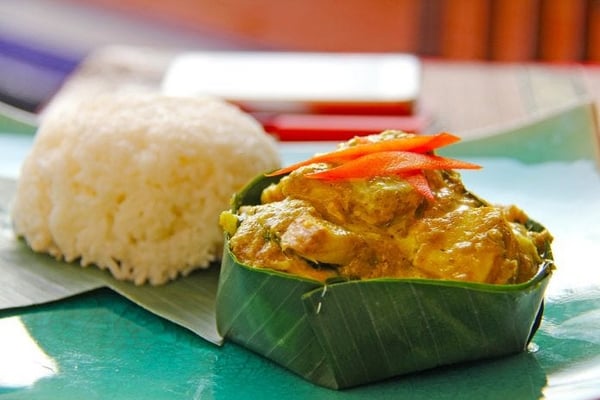 Photo credit: https://medium.com/@Travel.Earth/22-delicious-cambodian-dishes-you-need-to-try-54e0a310ae82
Photo credit: https://medium.com/@Travel.Earth/22-delicious-cambodian-dishes-you-need-to-try-54e0a310ae82
In addition to special foods, another cherished part of our New Year celebrations is playing traditional games. Favourite games include include Jaol Chuong (meaning “tossing the towels”), Leak Konsaeng (meaning “hiding the scarf”), Teanh Prort (which is tug-of-war), and many more.
Beyond this, the Cambodian New Year is a time for dancing and happy singing. Festive Khmer songs fill the air, creating an atmosphere of joy and laughter. In modern times, many people like to engage in friendly water fights as well. People will collect water in buckets, use spray hoses or fill up water guns and splash their fellow revellers passing by.
.jpg?width=600&height=400&name=khmer-traditional-game%20(1).jpg) Photo credit: https://www.boreiangkor.com/a-brief-history-of-khmer-new-year/
Photo credit: https://www.boreiangkor.com/a-brief-history-of-khmer-new-year/
Happy Khmer New Year to everyone from AIHM Cambodian Students!
Burmese New Year
"Julie" Khin Thiri Naing, BBA Student from Yangon
မြူးကြွတဲ့တေးသံ ပြန့်လွင့်လို့နေ ကူးပြောင်းစ တန်ခူးလေမှာ
The 13th to 16th of April every year is undoubtedly the most festive period in Myanmar. It’s the time we celebrate Thingyan, or the Burmese New Year Festival.
The word “Thingyan” means “transition from old to new year”. The holiday takes places during the month of Tagu in the Myanmar calendar.
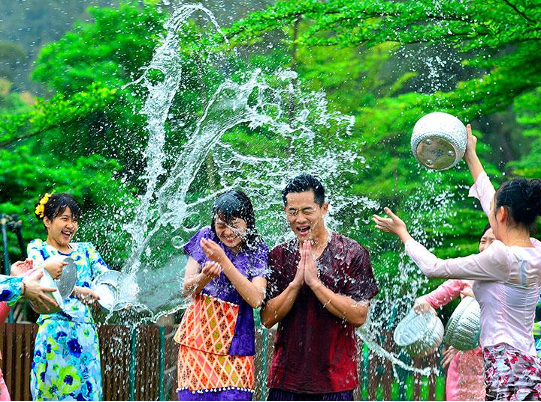
Photo credit: https://mtt.macaotourism.gov.mo/201704/en/contents/2/633.html?1491814622
Country-wide, people celebrate Thingyan by splashing water on their loved ones. This symbolises cleansing the sins from the past year and starting new year with a fresh soul. Forms of this water splashing custom can vary from sprinkling water with sprigs of Eugenia, representing victory in Myanmar, to tossing water from colourful buckets or playing with water guns.
Music and dance performances take to big stages all over the country to showcase the festive spirit.
During Thingyan, you can enjoy Myanmar’s signature New Year’s treat Mont Lone Yay Paw, made from sticky rice flour, palm sugar and fresh coconut. The treat is generously served at snack donation stations. Also, it always rains in the middle of the heat during Thingyan. The Thingyan flower, or Burmese Padauk, blooms following the rain, representing good beginnings. The Thingyan flower holds a special place in Burmese people’s hearts.
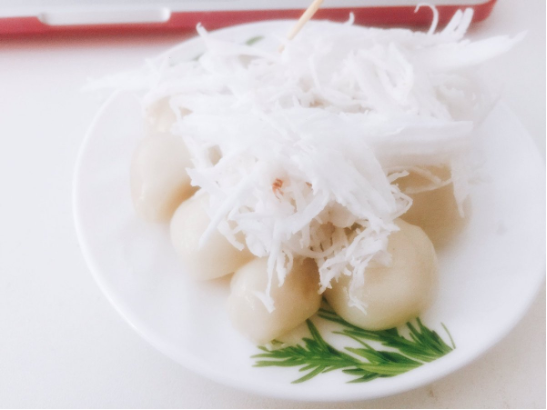
Photo credit: https://twitter.com/Myanmore/status/850298124568363009/photo/1
Unlike the Western New Year, which only lasts a day, Thingyan is celebrated over four days, followed by the New Year’s Day.
Day 1 –Thingyan Eve: On this day, Burmese people prepare to welcome New Year. People go to pagodas and monasteries to volunteer, helping to create a clean and peaceful atmosphere. Buddhist families place a ceremonial flower pot at their homes to welcome the King of Heaven in Buddhism, Thagya Min.
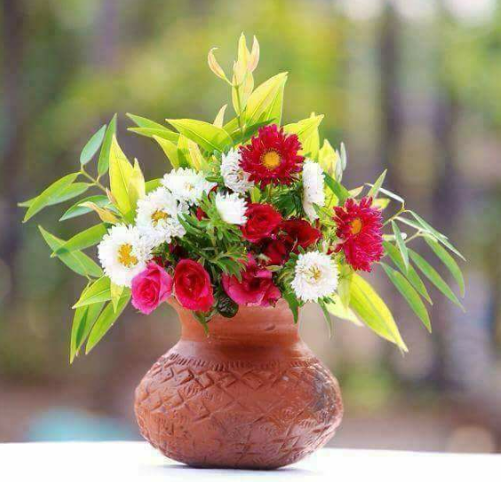
Day 2 and Day 3: The celebration starts and the streets fill with people holding Eugenia sprigs, water buckets, and water guns. Enhancing the festive atmosphere, the water is infused with scented perfume to freshen up everyone’s minds.
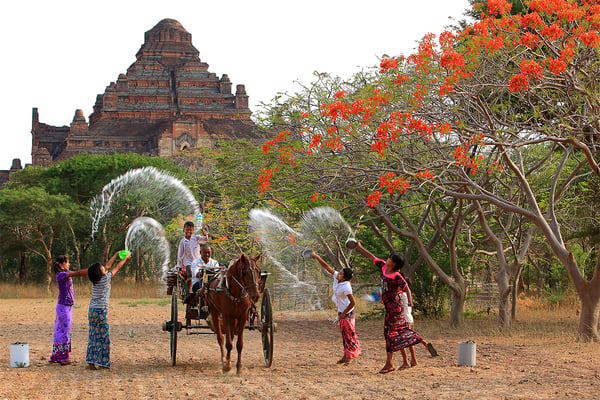
Photo credit: https://kookdook.com/best-cultural-festivals-around-the-world/
Day 4: This is the final day of the water splashing celebrations. It’s believed that on this day Thagya Min returns to heaven from earth. Buddhist locals use the water from the ceremonial pots to sprinkle their houses in order to attract good energy and luck into their homes and the lives of their families.
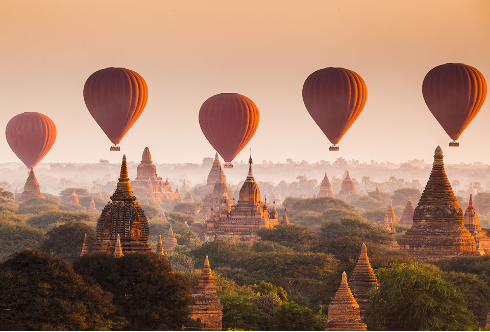
Photo credit: https://www.linkedin.com/pulse/what-myanmar-can-learn-from-development-neighboring-country-ni-win/
New Year’s Day: This day marks the first day of the first month in the Myanmar calendar. On this important day, people devote themselves to performing good deeds, such as taking care of the elderly, saying prayers in groups, donating food to others in need, and many more acts of generosity.
An adorable characteristic of the Burmese people during this festival is that they respect people’s boundaries. If you’re wearing religious clothing or simply say “no”, no one will forcefully splash you with water; they’ll respect your choice to stay dry. On top of this, some youths volunteer to hand out bottles of drinking water and and keep the streets clean of trash during the festival.
Thingyan not only celebrates Burmese New Year but encourages good deeds and enhances unity and harmony among communities.
Happy Thingyan from AIHM Burmese students, everyone!
Thai New Year
Kanyarat “Soft” Sitthilersjanya, AIHM BBA Student from Bangkok
Songkran is the traditional Thai New Year's festival, celebrated with great enthusiasm and joy throughout Thailand. Lasting for three days, typically from April 13th to 15th, Songkran marks the beginning of the solar year and coincides with the arrival of the dry season.
On the 13th of April, known as Elders Day, families come together to honor their elders by gently pouring water over Buddha statues and the hands of seniors. This symbolic act washes away the past year's misfortunes and sins, while elders bless the children back for a great start to the new year. Another cherished tradition involves returning sand to temples, symbolising the restoration of what's been inadvertently taken throughout the year. Temples are decorated with sand castles featuring vibrant flower decorations.
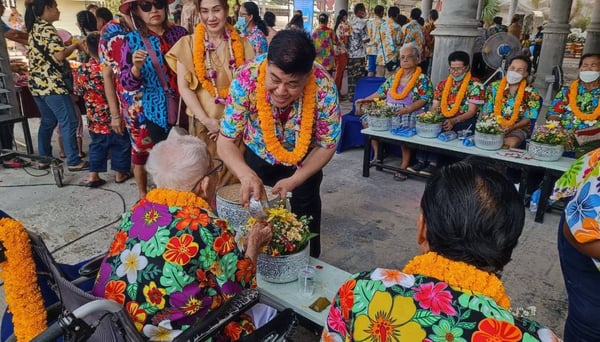
Photo credit: https://www.amata.com/news/49-csr-news-activities/906-thailand-s-songkran-festival-preserving-traditions-and-culture
Family Day, observed on the 14th of April, encourages families to bond and partake in water festivities together. It's a time of joyous reunions and playful water splashing.
The 15th of April marks the beginning of the Thai New Year according to the Chula Sakarat Calendar. Families come together for a big meal, symbolising a prosperous start to the year. Wearing new clothes is also customary on this day; doing so signifies fresh beginnings and luck.

Photo credit: https://www.pattayamail.com/thailandnews/thailand-announces-songkran-2022-festivities-in-bangkok-chiang-mai-ayutthaya-and-more-394558
The most iconic aspect of Songkran is the water festival. People joyously splash water on each other as a symbol of cleansing and renewal. Streets become lively with people armed with water guns, buckets and hoses, engaging in friendly water fights.
Besides water splashing, Songkran is also a time for family reunions and paying respect to ancestors. People visit temples to make merit, offer food to monks, and participate in religious ceremonies. Families gather to enjoy traditional meals and engage in cultural activities such as traditional Thai dances and games.
Throughout the country, communities organise parades featuring elaborately decorated floats, traditional music and Songkran shirts, which are colorful floral costumes. In some regions, elephant processions add to the spectacle.
Another standout symbol of Thailand's Songkran festival is the popular Songkran shirt. Featuring vibrant floral patterns, the designs evoke joy and renewal. Worn by both locals and tourists, the colorful flower prints add to the festive ambiance.
In recent years, Songkran has also become a time for tourists to experience Thai culture and join in the festivities. Songkran’s colorful celebrations and high-energy water fights attract visitors from around the world.
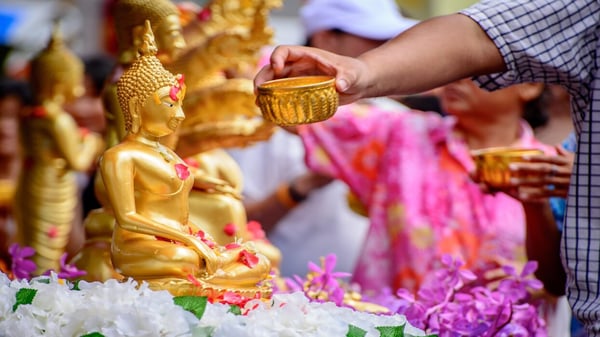
Photo credit: https://www.agoda.com/travel-guides/thailand/songkran-2024-your-guide-to-thailands-splashiest-new-year/?cid=-218
Happy Songkran everyone from AIHM Thai Students!
Talk with Our Students!
AIHM has some of the friendliest students in South East Asia! (We may be biased, but we still think it’s true!) This is one of things that makes the AIHM experience so special. We’re all passionate about our goals and our future. We understand that many of the friendships we make here will last a lifetime.
Do you know want to know what life at AIHM is really like? Scan any of the QR codes below to chat with Melissa, Julie or Soft.

Find more Student Ambassadors here:


.png)
